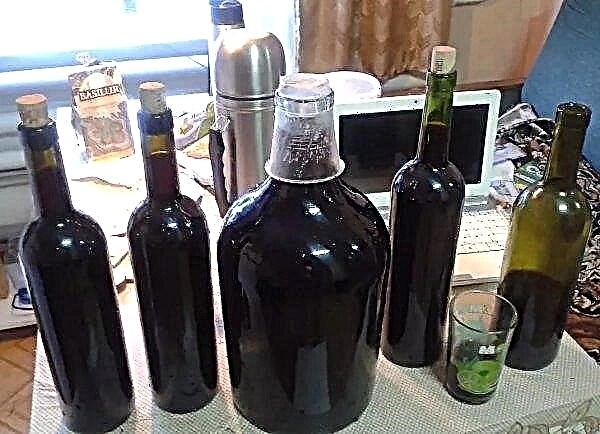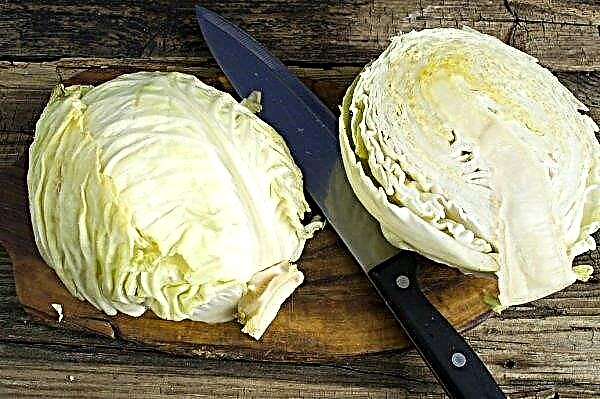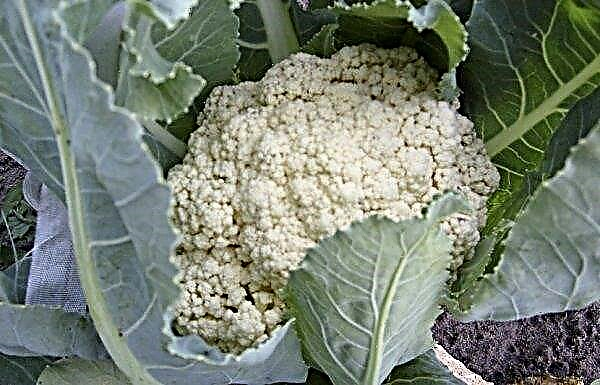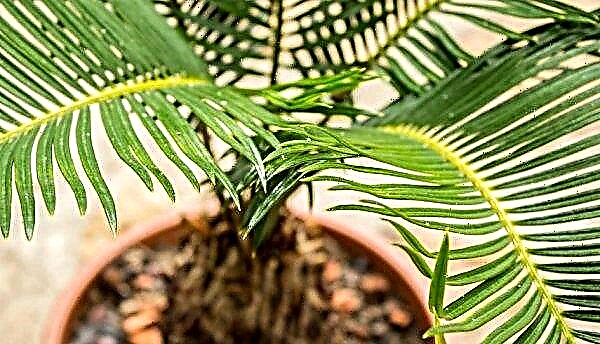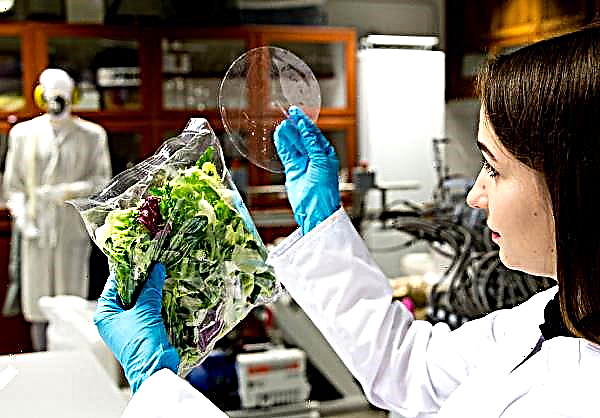Today, many gardeners, with the goal of independently growing a rich and high-quality crop, buy or produce greenhouse and greenhouse constructions on their own. However, as practice shows, the construction of the structure alone cannot be dispensed with, it is important to ensure the proper location of the latter according to several rules, which will be discussed in this article.
Why do you need to properly position the greenhouse in the area on the cardinal points
The correct construction of the greenhouse relative to the light sides and the density of the site must be carried out with the aim of a reasonable distribution of light and heat energy on the ground. A sufficient amount of lighting is necessary for the full and timely development of plants grown in greenhouse conditions. In this case, there is no need to constantly maintain in working condition the currently expensive artificial growth accelerators, and, as a result, considerable monetary savings are achieved taking into account the increase in electricity tariffs for heat heating and lighting.

The main criteria for choosing a place for a greenhouse
The list of main factors that must be taken into account when placing a greenhouse on a home plot is as follows:
- climatic local characteristics of a certain region according to its geographical position;
- landscape features (presence / absence of hillyness) of the terrain and soil structure in the area of the greenhouse installation;
- groundwater depth;
- level of natural illumination of the territory;
- greenhouse maintenance conditions (ensuring the possibility of easy access to space);
- ease of installation of technical devices (close / long distance to plumbing, electrical, heating communications) for plant care;
- the proximity of the greenhouse to other buildings and vegetation (trees, shrubs, etc.).
The fertility of plants cultivated in greenhouse conditions directly depends on the observance of these criteria during the installation of the greenhouse on the home site.
Important! The installation of greenhouses near trees and shrubs, as well as buildings, is not recommended: in the fall, foliage will fall on the roof of the greenhouse, and in the winter - snow will fall, thereby clogging the roof surface and preventing the full flow of sunlight to seedlings.
Consideration of climatic characteristics
Natural sunlight, and most importantly a sufficient number of them, play a very important role in plant photosynthesis, since in the process of just such heating, the growth and development of crops is most activated. There are two ways to position the home greenhouse relative to the light sides: latitudinal and meridional.
In the first case, the so-called “ridge” of the roof frame should be oriented in latitudinal coordinates from west to east (like the beds in the room itself), and the “slopes” are lowered by about 25 degrees and directed towards the south and north. With this installation of a greenhouse, plants grown in closed conditions will be fed with solar energy from morning to evening, without receiving thermal burns. Moreover, from dawn to dusk, the level of light arrival on the earth's surface is different, one of the advantages of the east-west location of the hothouse frame is also the fact that the plants receive an additional percentage of heat in the first half of the day, which is impossible with the meridional installation of the greenhouse. This method is most effective for year-round operation of the greenhouse: thanks to this location, the soil in the greenhouse is better warmed up, there is an optimal regulation of temperature indicators inside, and the plants are lit evenly.
Moreover, from dawn to dusk, the level of light arrival on the earth's surface is different, one of the advantages of the east-west location of the hothouse frame is also the fact that the plants receive an additional percentage of heat in the first half of the day, which is impossible with the meridional installation of the greenhouse. This method is most effective for year-round operation of the greenhouse: thanks to this location, the soil in the greenhouse is better warmed up, there is an optimal regulation of temperature indicators inside, and the plants are lit evenly.
When using the second method, the skeleton "horse", similar to the beds in the greenhouse, on the contrary, looks along the meridians in the direction from south to north, and the "slopes" are oriented from west to east. The meridional installation of the greenhouse is possible if seedlings are expected to be grown from April and harvest is planned for September. During this period of the year, the sun is able to rise quite high, providing full illumination of the entire seedlings thanks to the vertical direction of the sun's rays.
An important point in the correct installation of the greenhouse is the exact determination of the duration of operation of this design. As practice shows, only for the spring use of greenhouse conditions is any way of installing a greenhouse suitable, even meridional, in which the structure will be shaded in the morning hours: in spring, summer and autumn afternoon, all plants will have enough solar energy. But in winter, this way of arranging the greenhouse will be unsuccessful, because the sun is low enough, because of which there will be a lack of heat energy not only in the morning, but also in the afternoon.
Also, in the case of annual operation of a greenhouse, the method of installing the latter depends on the turnover of sowing plants and the requirements of seedlings for the degree of illumination. When growing heat-loving crops, it is recommended to install a greenhouse in a latitudinal orientation, and for those who love shade more, meridional characteristics are also suitable.
Did you know? Until 12 noon, photosynthesis of plants is more active, and the soil receives 8-12% more sunlight than in the afternoon. This fact is explained by the fact that before noon the atmospheric air is not "condensed" by atmospheric pollution and passes sun rays well.
Experts recommend, before placing the greenhouse, to take into account the geographical requirements regarding the climatic location of the greenhouse (this will significantly reduce the likelihood of crop loss):
- in the southern and central regions, the main criteria regarding the light sides are the same when choosing the appropriate greenhouse location;
- in the territories of the northern range (latitude greater than 60 °), any kind of greenhouses must be placed in a latitudinal way: it is not typical for the sun to rise high above the horizon even in summer, so the meridional installation will only harm the potential crop;
- if the home greenhouse has small parameters, for example, 3 × 4/3 × 6 m, then the direction of the light on the sides will not play such a big role as in the case of long greenhouses: their location is most successful according to the movement of the sun (from east to west) in areas of Belarus, the North and the Center of Russia, as well as Northern Ukraine.
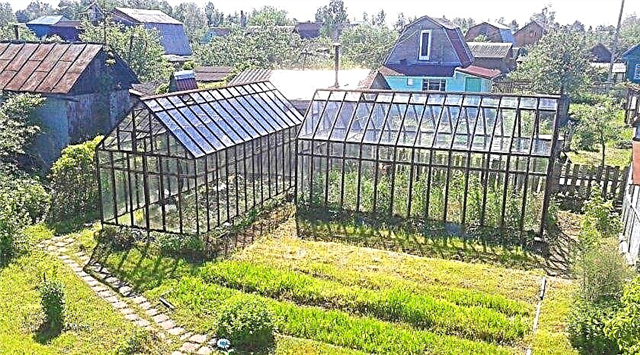
Only the correct placement of the frame of the greenhouse guarantees maximum heat and light flux: good air warming in the greenhouse perfectly affects the development of crops even at night due to the accumulating effect, which eliminates the additional need for heating or lighting.
If we talk about the most suitable construction material in terms of thermal insulation and light transmission, the polycarbonate greenhouse is closest to traditional glass because polymer plastic is capable of transmitting a significant percentage of light and heat energy (up to 90%). Basically, polycarbonate greenhouses have an elongated shape, seedlings in such a room are usually planted along the long edge of the structure: thus, there are no "blind" zones with a lack of lighting on the beds.
Video: How to install a greenhouse around the world
Direction of the wind
The through wind negatively affects the internal microclimate in the greenhouse space (it can reduce the temperature inside the greenhouse by 5 degrees), therefore, on the development of plants, therefore it will be advisable to protect the greenhouse from the jet streams of cold air with the help of buildings, vegetation, or fences, which however, time will not interfere with the flow of natural sunlight to crops.
Near residential or utility buildings, a greenhouse can only be located on the leeward side (which faces where the wind blows). A polycarbonate greenhouse can be placed at the southern edge of the house, however, it is important to observe the necessary space between the residential building and the greenhouse, since the gathering and falling of snow on the roof of the greenhouse, as well as the accumulation of precipitation between the walls of the buildings, can damage the material from which the greenhouse is made.
Important! In nature, there is no artificial source of light and heat, identical to the solar spectrum, necessary for the active photosynthesis of plants.
It is also possible to put a protective screen (a fence made of metal or slate not more than 1.5 m high): along the elongated wall of the greenhouse with an interval of 2 meters, it is necessary to place rooted supports on which the crossbars should be located. Metal profiles are installed on the prepared frame using self-tapping screws: this design not only protects the greenhouse from wind flows, but also provides additional illumination of cultivated plants by reflecting sunlight.
If you place the greenhouse in an open area that is not protected from winds, make sure that the main and most frequent direction of air flow is oriented to the front side of the greenhouse. Definitely an unsuitable place for the location of the greenhouse is between two buildings. Such an installation creates the effect of a wind tunnel, assuming the constant presence of drafts.
How soil and terrain affect the location of a greenhouse
Before installing a warm room for proper breeding of crops, it is necessary to analyze the level of groundwater and its shallow water in the garden area. The optimal level is not less than 1.2 m depth.
Groundwater close to the ground is an enemy not only of the greenhouse design, but also of the plants themselves. In the first case, flooding of the greenhouse can occur, and in the second - the decay of the root systems, the appearance of algae and moss in the soil. In order to avoid the above unpleasant consequences, the level of near groundwater will help to fix the tile or pile foundation. Many also recommend combating excess moisture with drainage ditches dug along the greenhouse.
Territories where there is a possibility of stagnation of moisture are not suitable for growing crops in greenhouse conditions, therefore, in order to avoid disturbance of air and water exchange in the soil, it is strictly impossible to use clay soil in its pure form: clay, according to the features of its heavy structure, practically does not pass water or air . The type of soil under the top surface layer can be determined by digging a small hole. The soil must be hard and dry to avoid subsidence and loss of stability of the structure: if it is soft, the building has the risk of not only skewing, but even collapsing.Did you know? It is believed that the method of greenhouse plant growing was discovered by the ancient Romans. They planted the plants in small carts, rolling them out in the sun during the daytime, and at night - heating artificially in local premises.
It would be ideal to place a greenhouse on a sandy site, in the case of clay, it is necessary to dig a pit 60-70 cm deep, at the bottom of which the following are to be laid out in layers:
- crushed stone (10 cm);
- sand (40-50 cm);
- black earth.
The same manipulations are performed to regulate the normal level of groundwater.
As for the relief, ideally, the plot for building the greenhouse should be flat, without any depressions and slopes, since the latter can provoke a continuous accumulation of moisture in the lower part of the slope, and its constant lack in the upper, sliding of the soil and its uneven heating. The frame base of the greenhouse at an angle can cease to fulfill its functional role as the supporting structure, and in winter, the formation of a load in the form of snow will completely destroy the base of the greenhouse.

Convenience of placing a greenhouse
The shadow above the roof or on the walls of the greenhouse significantly reduces the efficiency of growing crops, even when its installation relative to the light sides is carried out correctly. For this reason, the presence of nearby buildings, tall ligneous plants and highly branched perennial shrubs that create constant shade in the immediate vicinity of the greenhouse is not the best option for a successful harvest.
The distance should be at least 20 m in the case of trees and shrubs, with regard to the fence and buildings, a distance of 3-7 m will be sufficient. In the case when it is impossible to put the greenhouse away from the buildings, you should pay attention to the inadmissibility of the shadow falling on greenhouse until 12 noon. In addition, note: in winter, the sun is not high above the horizon, while fences and structures create a longer shadow than at other times of the year.
Important! Since the angle of incidence of sunlight depends on the period of the annual cycle, an ideal adaptation in the greenhouse would be a movable roof with the ability to change the angle of inclination of the surface slope.
The entrance to the greenhouse should be built in the middle, and the beds on the sides: thus it will be convenient to care for cultivated plants.
For spring-autumn seasonal greenhouses, taking into account the distance between the last and heating, as well as electrical communications is not so important, it will be enough to arrange free access to the greenhouse with large garden tools. It will be good if the water for irrigation seedlings (column or well) is nearby.
In the case of year-round operation of the greenhouse, it is assumed that it is required to equip it with lighting, watering and heating systems that connect them to the main sources, presumably as close as possible, which will significantly save money on materials used and pipe laying. Watering automation will also greatly facilitate the process of growing greenhouse plants.
Thus, for crop quality when using greenhouse conditions in growing, it is necessary not only to pay attention to the selection of first-class planting material, types of fertilizers and proper seedling care, but also to properly orient the greenhouse on the site.
This will avoid such unpleasant consequences:
- artificial deterioration of climatic conditions;
- lack of seed growth, or seedling growth;
- poor and low-quality harvest, lag in seedling development;
- a drop in the taste of fruits.
Did you know? The largest number of greenhouses is in the Netherlands - the glass abundance of Dutch greenhouses occupies about 10,500 hectares of the country's total area (42,508 km²).
Of course, rarely anyone succeeds in not violating a single rule and complying with absolutely all recommendations on the favorable installation of a protected structure for cultivated plants, and even then, under a combination of appropriate circumstances, since each individual site has its own individual characteristics and nuances. However, in a reasonable scenario, it is still possible to choose the optimal combination of the required conditions in such a way that the building would be of great benefit in the form of an abundance of the harvest to its owner for more than one year.




